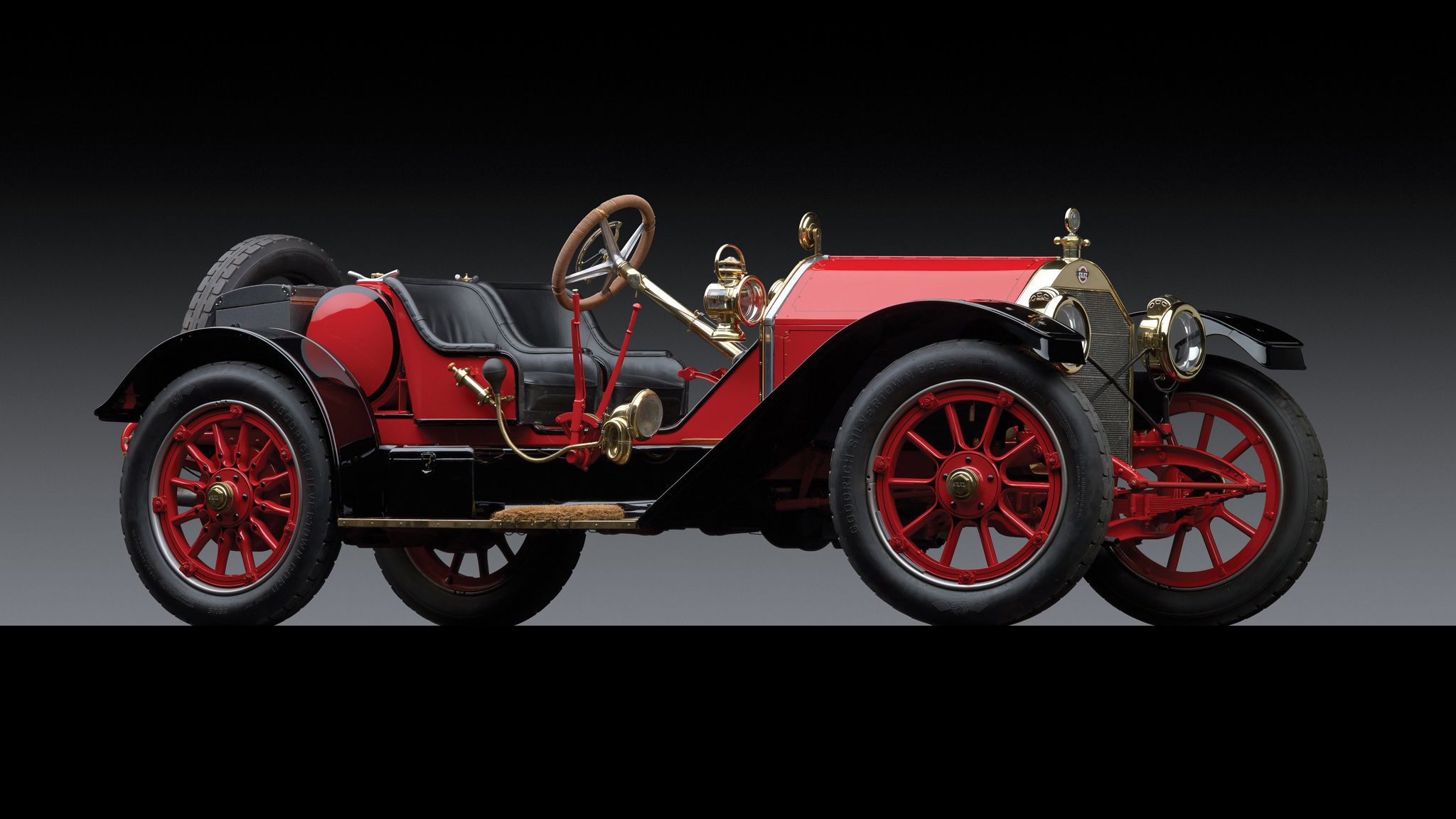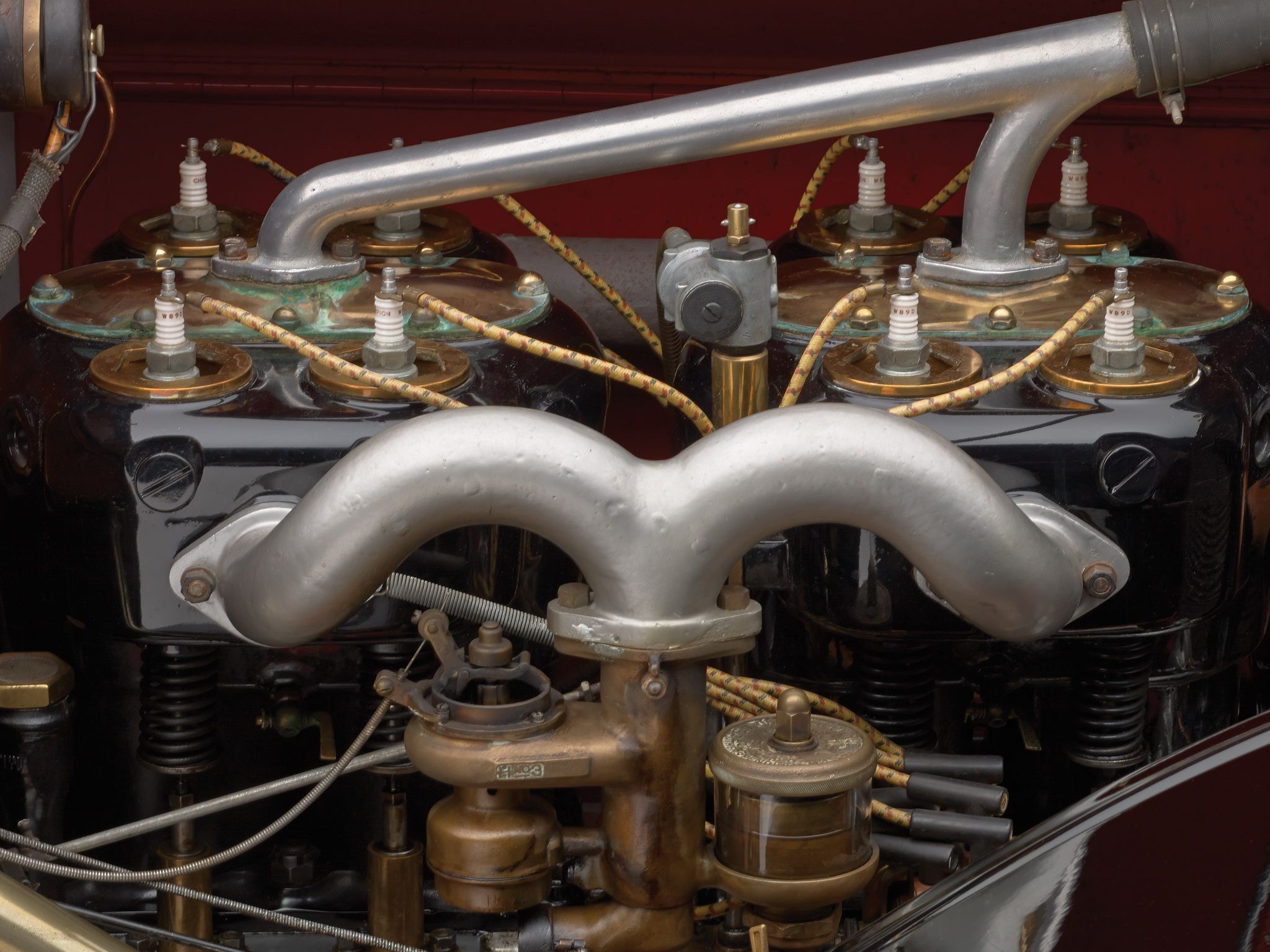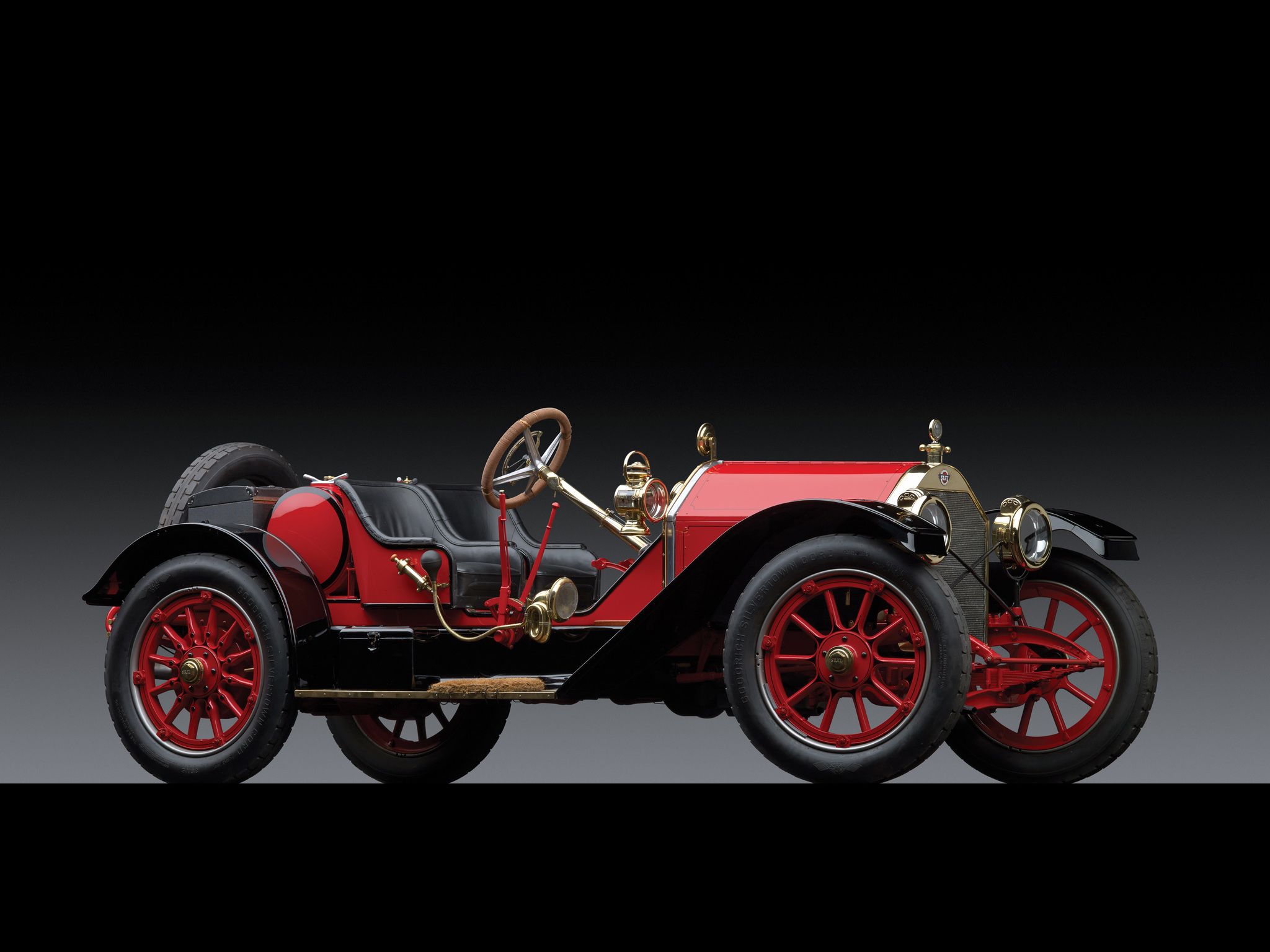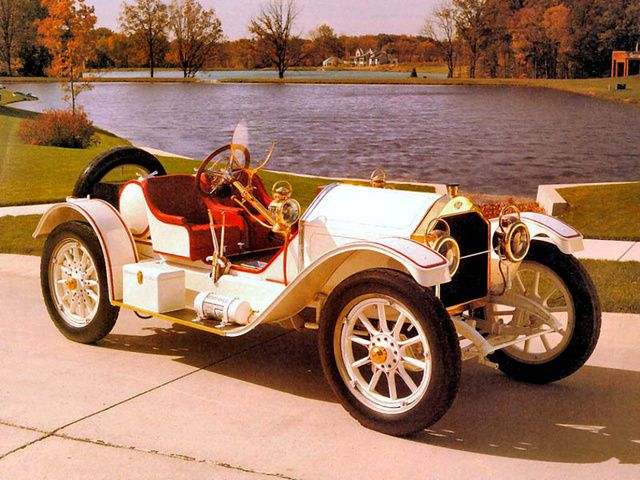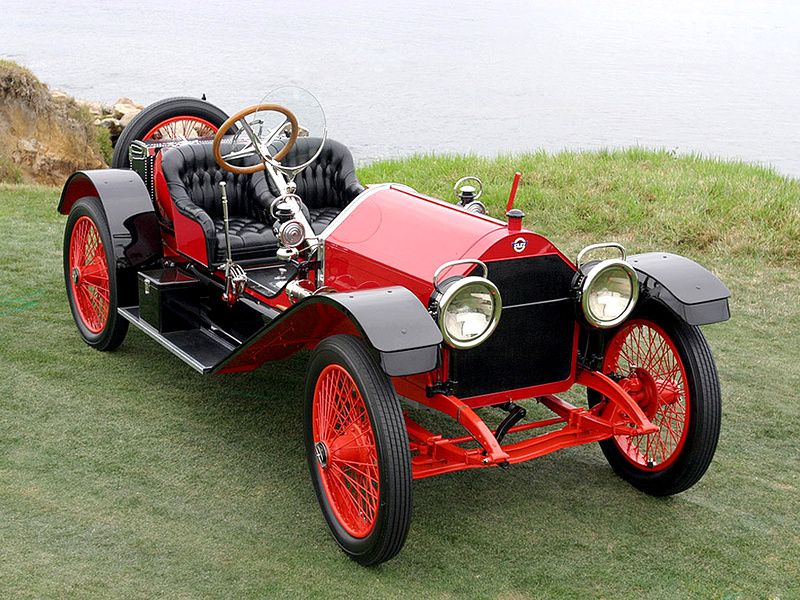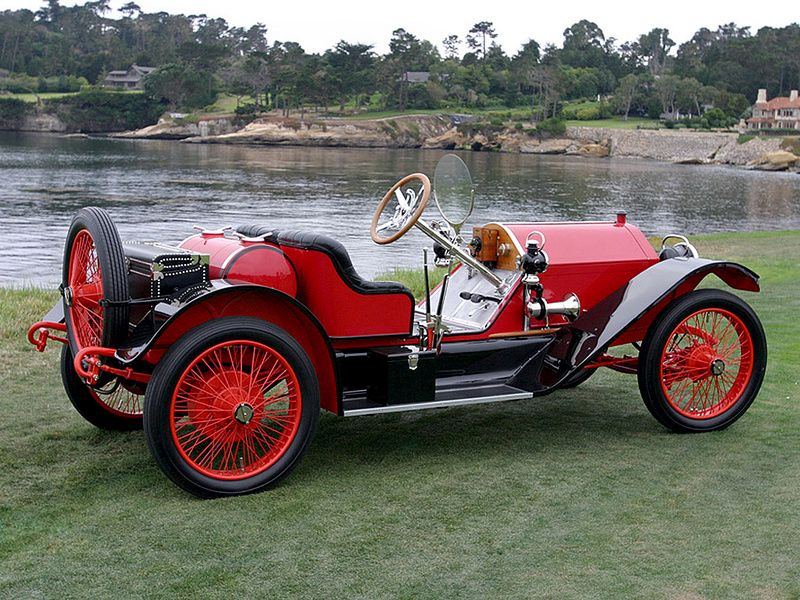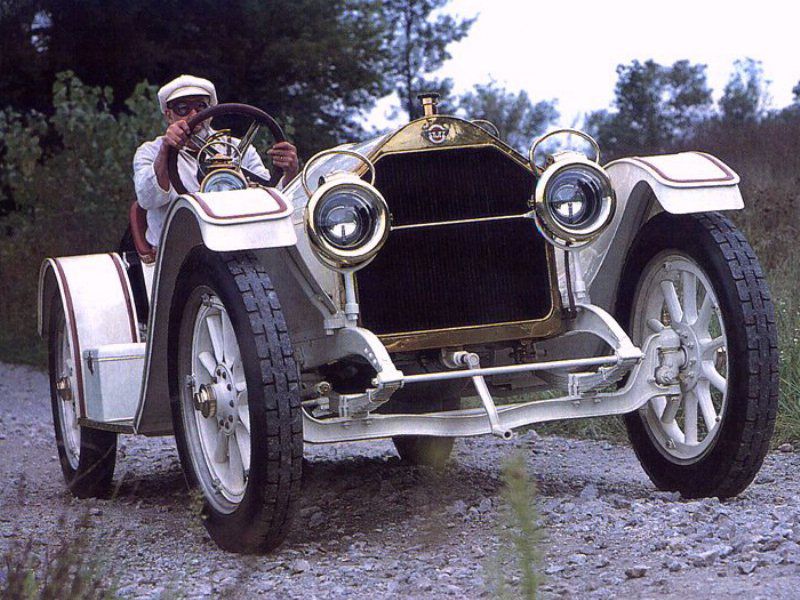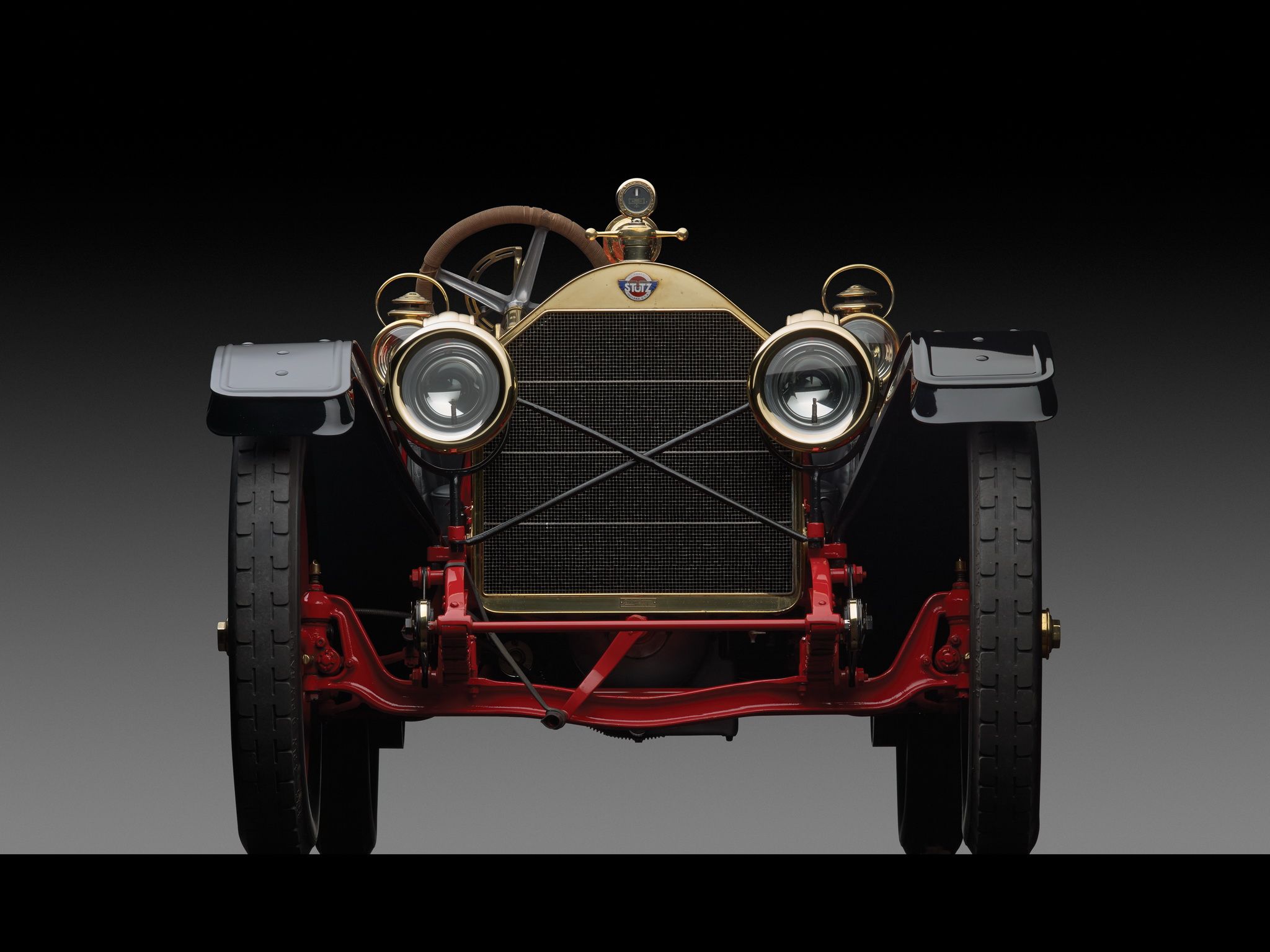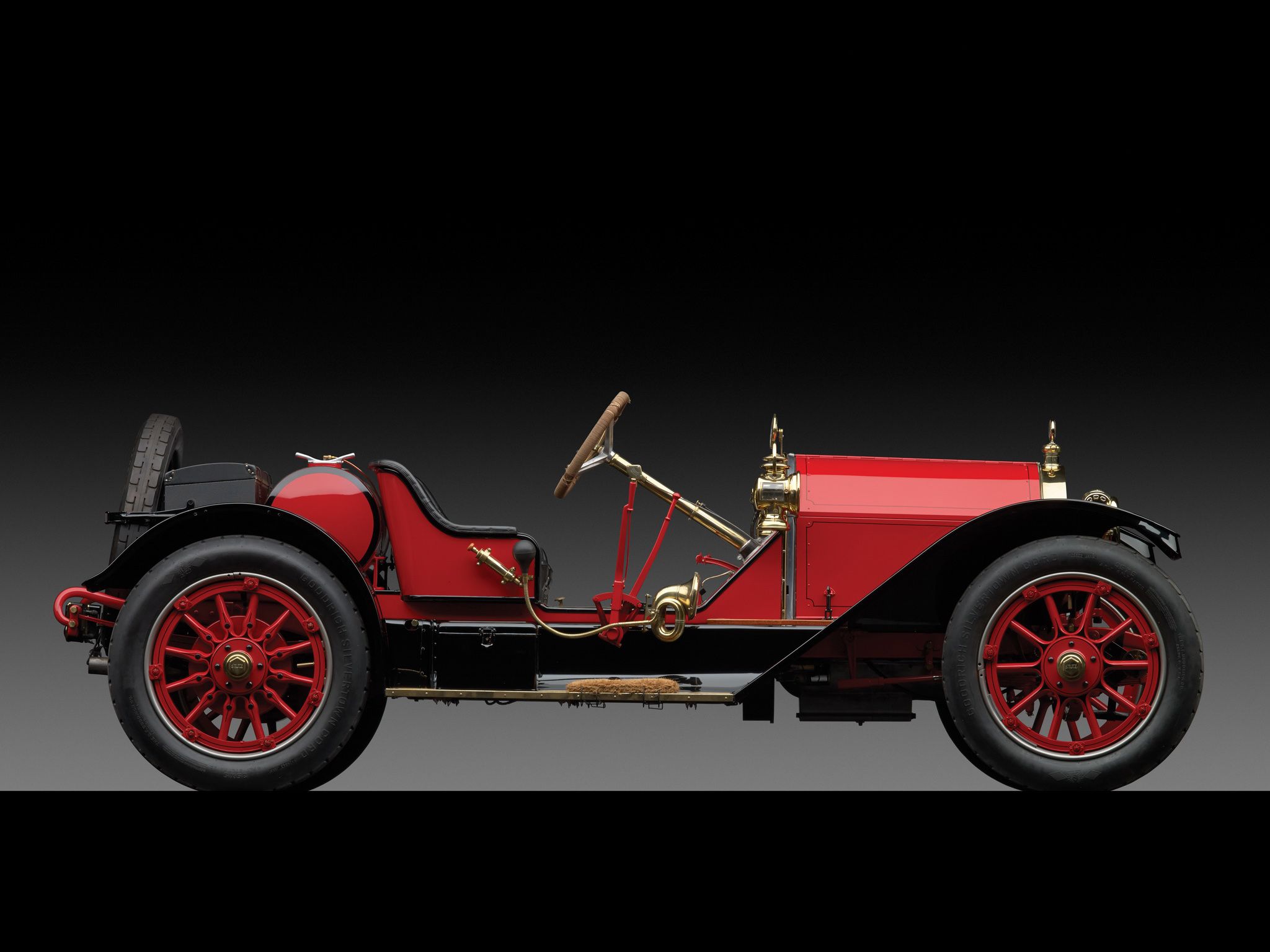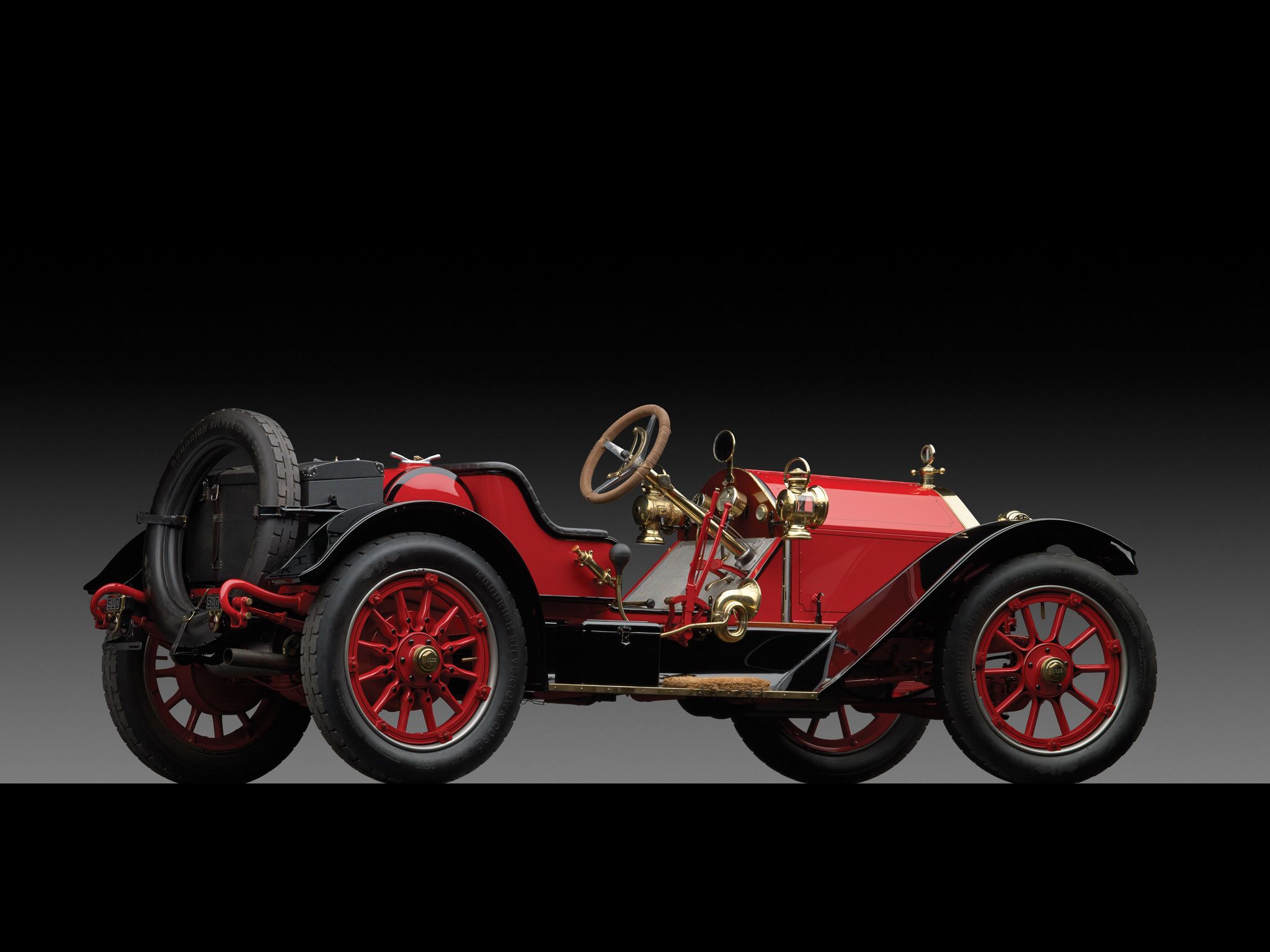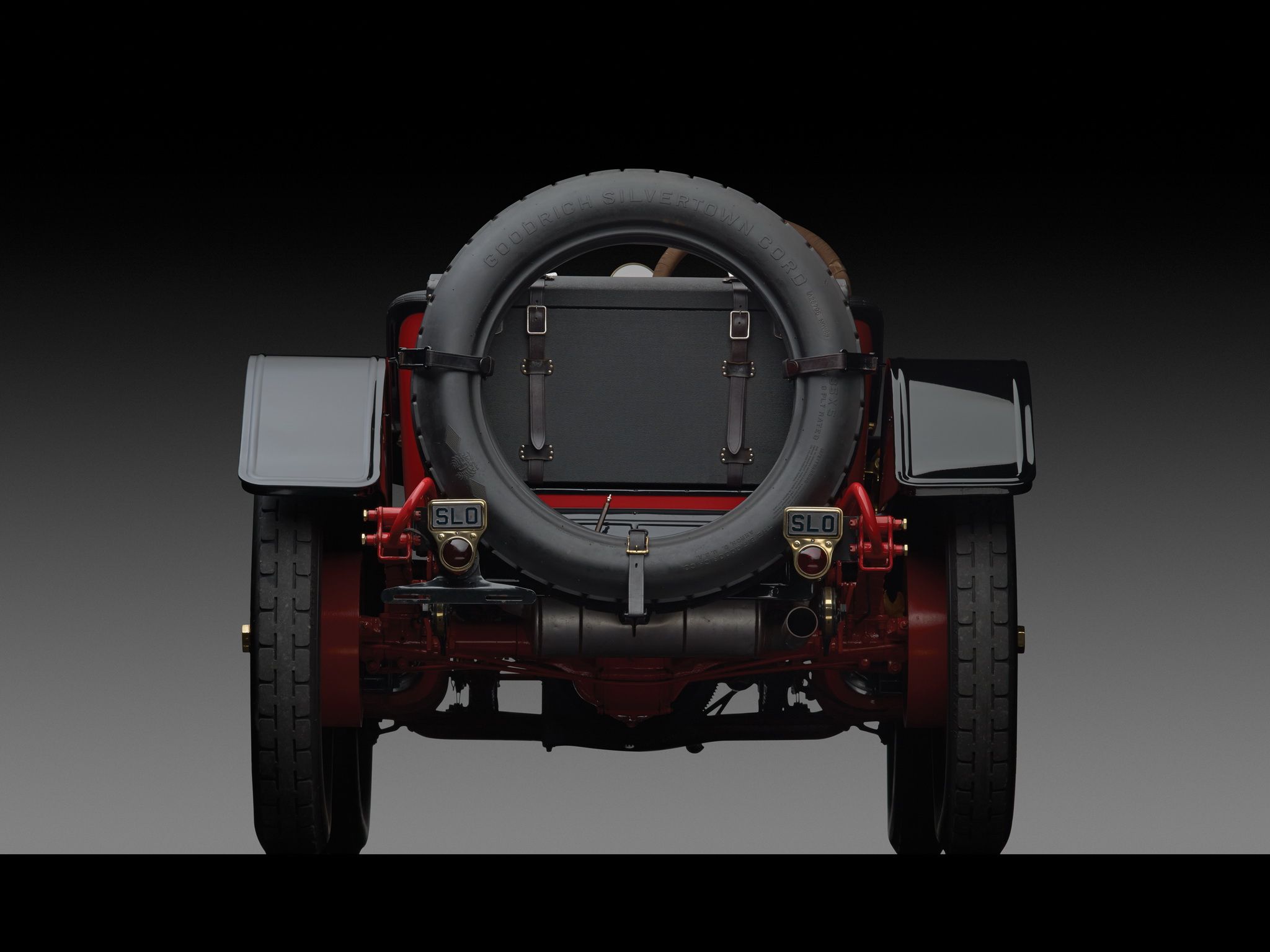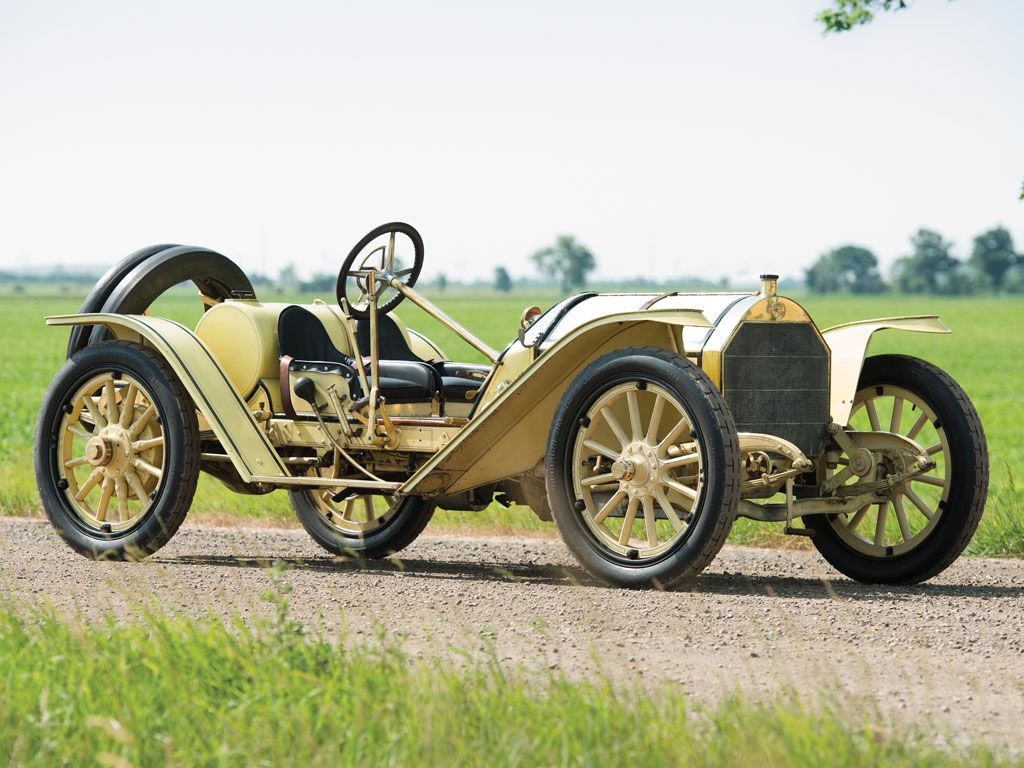If the 1911 Mercer Raceabout->ke5259 was the first American car to find success using the “race and sell” philosophy, the Stutz Bearcat was among the first to parlay that supercar->ke177 status in to celebrity status. After mixing it up with the Raceabout on tracks and winning 25 of the 30 races it entered in 1912, the Bearcat grew into something of an automotive icon, famously finding its way into the hands of George "Cannonball" Baker for a record-breaking 1915 cross-country run. These exploits garnered the Bearcat a name recognition that still holds up 80 years after the company’s demise.
The Stutz Bearcat was born from racing->ke447: it started out in 1911 as the Ideal Motor Car Company, and entered a car in its big hometown race, which just happened to be the Indianapolis 500. The car finished in 11th place, and the company's name was changed to founder Harry C. Stutz' name. The Bearcat debuted the very next year as the street version of the race car->ke148, with very little changed. Stutz took racing very seriously. Baker's coast-to-coast run was undertaken in response to a Stutz buyer who was miffed about losing to the Mercers. Over the years, the Bearcat became known for its speed and performance, growing into a luxury->ke505 speedster in the Roaring Twenties.
Continue reading to learn more about the 1912 Stutz Bearcat.
1912 Stutz Bearcat
- Make: Array
- Model: 1912 Stutz Bearcat
- Engine/Motor: flat-4
- Horsepower: 60 @ 1500
- [do not use] Vehicle Model: Array
Exterior
The 1912 Bearcat was as close to a race car for regular roads as was possible at the time, which is to say that it was effectively the Indy 500 car with fenders, lights and a tiny monocle windshield. For all that purposefulness though, the Bearcat had an element of purposeful style. The Bearcat sat lower than many brass-era cars, thanks to an underslung suspension, and an extravagant Stutz nameplate on the grille proclaimed the car's identity with pride. A barrel-shaped fuel tank rode behind the seats, followed by a small trunk, with a spare tire or two hanging out back. The brightwork was nickel or brass, in keeping with the style of the era, and the running boards were home to tool boxes and other equipment. Artillery-style wooden wheels were often painted to match the car, and Bearcats tended to be painted in bright colors, unlike their drab counterparts. Wire wheels are also sometimes seen.
As it appealed to the posh crowd, the Bearcat became more civilized over the years. Stutz improved the car's bodywork and style. By 1922, the Bearcat featured fully enclosed bodywork, an upright windshield, more-modern wire wheels and a rakish roadster->ke1418 body.
Exterior Dimensions
|
Length |
4,060 MM (159.8 Inches) |
|
Width |
1,680 MM (66.1 Inches) |
|
Wheelbase |
3,050 MM (120.1 Inches) |
|
Track (fr/r) |
1,440 MM (56.7 Inches) / 1,440 MM (56.7 Inches) |
Interior
A car without bodywork doesn't have an "interior" per se, and like the Mercer Raceabout, the Stutz Bearcat made its driver and ride-along mechanic -- that is, passenger -- a part of the machine. Brake levers and the throttle pedal were both located outside the car, and there is no semblance of a roof or doors. The MotoMeter gauge displayed Stutz' logo: "The Car That Made Good in A Day," a reference to its Indy 500 performance.
Drivetrain
The Bearcat was a lightweight in contrast to the big-bore racers from Europe->ke139, and its T-head four-cylinder engine displaced about 6.4 liters. Although rated at 36 horsepower, the cars were known to make twice that. The Bearcat was capable of speeds up to 80 mph. Stutz wasn't content to leave that alone though, and introduced a new four-cylinder for 1917. The updated engine featured four valves per cylinder and made 80 horsepower. The transmission was a three-speed transaxle whose clutch had a reputation for being brutally difficult to use.
The underslung frame placed the axles above the frame rails, lowering the car's body for a lower center of gravity. This gave the crude leaf-sprung solid-axle suspension a performance edge over that of many of the Bearcat's contemporaries.
Drivetrain Specifications
|
Type |
Wisconsin Straight 4 |
|
Displacement |
6,388 cc |
|
Bore x Stroke |
120.7 MM x 139.7 MM (4.8 Inches x 5.5 Inches) |
|
Compression |
4.0:1 |
|
Valvetrain |
2 valves / cylinder, OHV |
|
Power |
60 HP @ 1,500 RPM |
|
Top Speed |
130 KM/H (81 MPH) |
Prices
The Bearcat originally sold for around $2,000, about twice what the average family car cost in 1914, but still considerably less than the big bruisers from Germany and France. The price climbed over the years, to $2,300 in 1917 and $3,900 in 1921. With about 1,000 Bearcats produced between 1915 and 1922, and a shockingly small number (less than 10) of the early cars known to survive, modern values are high. A 1914 Bearcat sold for $1.32 million in 2008, setting a high-water mark that still stands.
Competition
Mercer Raceabout->ke5259
The Bearcat's natural enemy was the Mercer Raceabout, which was a similarly petite and nimble car for the day. Mercer was much more focused on racing than Stutz, and while roadgoing Bearcats became more civilized, the Mercer Raceabout remained a stripped-down track brawler.
Read our full review here.
Locomobile
Although Locomobile's racing star was fading by the time the Bearcat came on the scene, the company did mirror Stutz' model of using racing success to establish itself as a purveyor of high-performance luxury vehicles. In the aughts, big-bore Locomobiles were regulars at the prestigious Vanderbilt Cup, and a Locomobile was the first American-built car to win an international automotbile race.
Conclusion
The Stutz Bearcat didn't survive the Great Depression, but it left a lasting impression on the industry and on the imagination of pop culture. The car even starred in a TV series that lasted a single season in 1971: "Bearcats!" It was a modern-day take on Westerns, and featured adventurers in the WWI-era American West using a Stutz Bearcat as their vehicle of choice. The series didn't last long, but it's a good indicator of the Bearcat's continued car-celebrity status.

